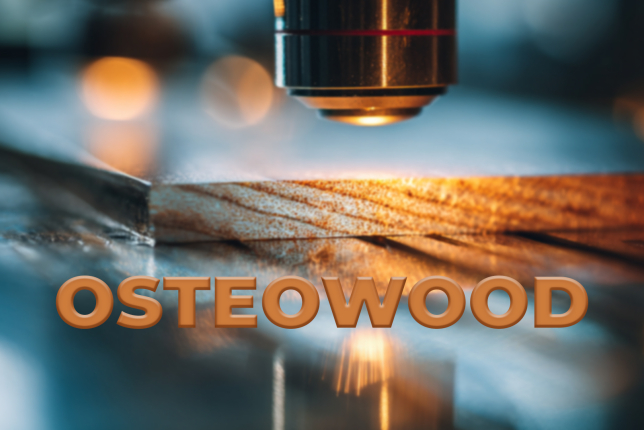Dr. Laura Andže on Latvian Radio’s “Zināmais nezināmajā”

On superwood, Professor Liangbing Hu’s research, and the Latvian scientists’ idea for a biocompatible implant material
Today Dr. chem. Laura Andže, leading researcher at the Latvian State Institute of Wood Chemistry (LSIWC), appeared on the Latvian Radio programme “Zināmais nezināmajā” (“Known in the Unknown”), where she spoke with journalist Mariona Baltkalne about wood densification research and recent advances in this field.
Laura Andže explained that, although wood densification is not a new concept — the first patents date back to the early 1900s — modern research is revealing new possibilities by combining classical cellulose extraction methods with hydrothermal treatment. This approach, described in a Nature paper by Professor Liangbing Hu and his team, has also become the foundation for the research carried out at LSIWC.
“These scientists combined two well-known methods — cellulose pre-treatment and hydrothermal pressing — and obtained a material with new properties, which they called superwood,” explains Andže. “At LSIWC, we started exploring the same approach, modifying the processes and achieving very promising results.”
While Professor Hu’s group focuses on applications of superwood in the furniture and construction industries, LSIWC researchers — in collaboration with scientists from Rīga Stradiņš University and the Latvian Institute of Organic Synthesis — are pursuing a completely different direction: the development of osteosynthesis implant materials from wood within the OsteoWood project, part of the national research programme BioPhoT (No IVPP-EM-Innovation-2024/1-0002).
“We aim to create a material that is biocompatible with the human body — non-toxic, stable, and suitable for use in aqueous or physiological environments,” says Andže. “If we can reach a stiffness level similar to cortical bone, this wood-based material could become an alternative to metal implants.”
The researchers’ work continues the legacy of Latvian cardiologist Ēvalds Ezerietis, who developed a juniper-wood hip implant patent in the XX century, successfully tested in veterinary medicine. Today, LSIWC scientists continue along this path, primarily using birch wood in their studies.
Speaking about the industrial potential of superwood, Laura Andže adds:
“Such material could certainly find use in furniture manufacturing — particularly as an alternative to nails or screws, for instance, in wooden dowels. Its broader adoption will depend on how efficiently the technology can be scaled up.”
Wood chemical modification and densification studies in Latvia date back to the 1930s, led by Professor Arvīds Kalniņš, the founder of LSIWC. Even then, scientists were seeking ways to make compressed wood retain its shape. Today, that tradition continues — in a new and innovative form.



